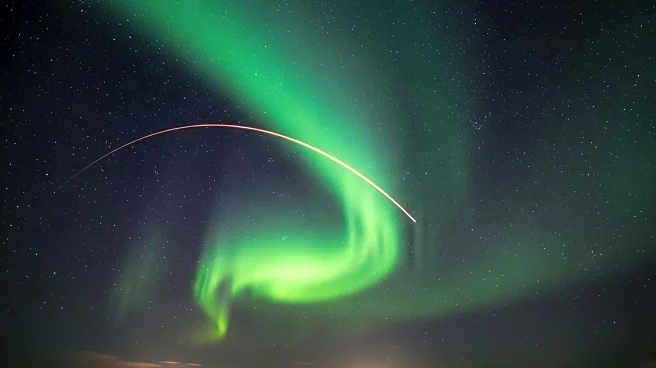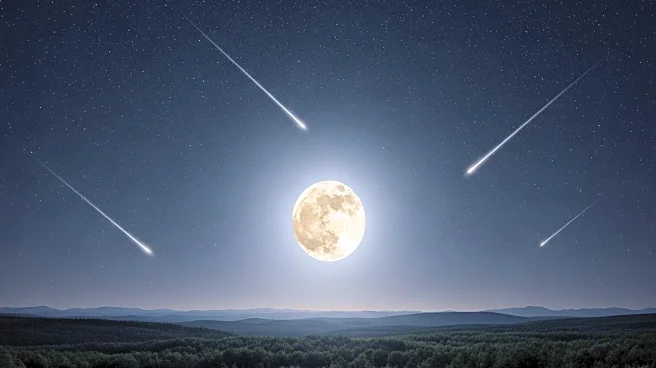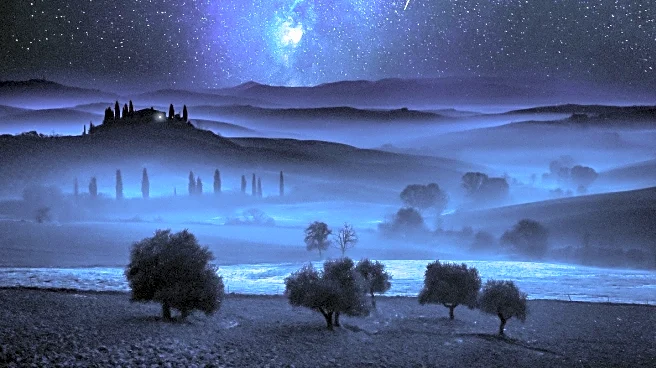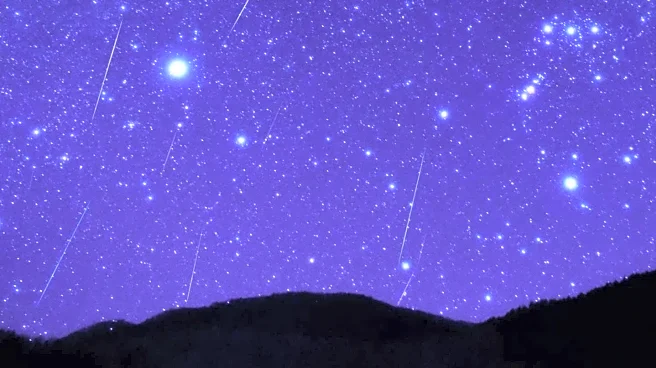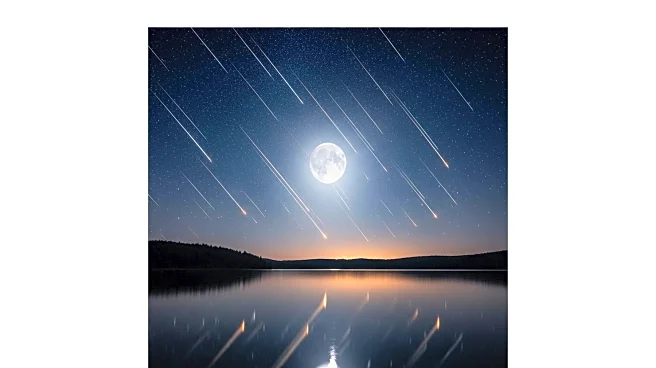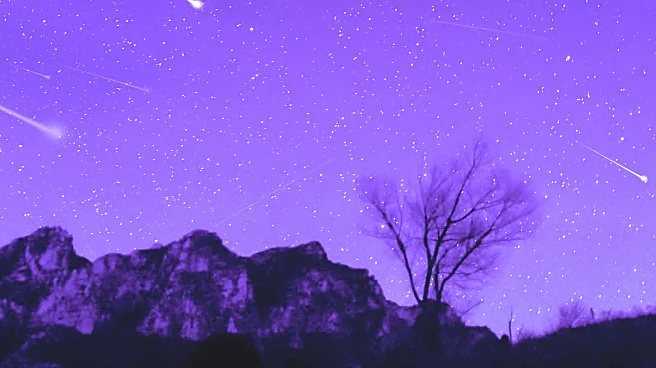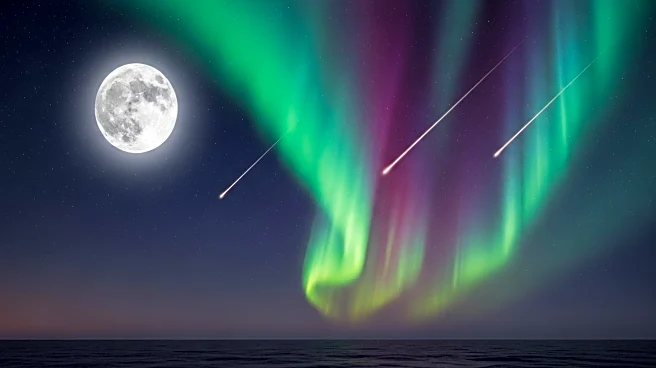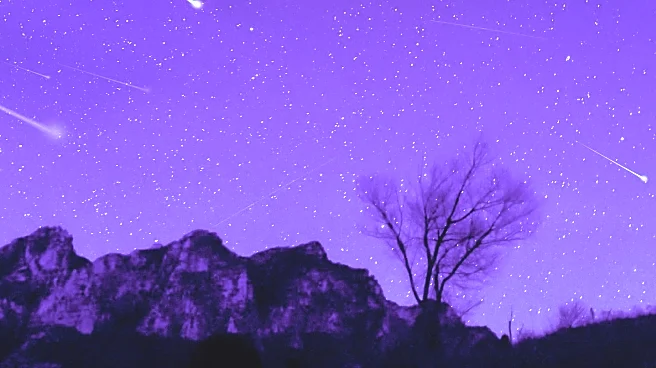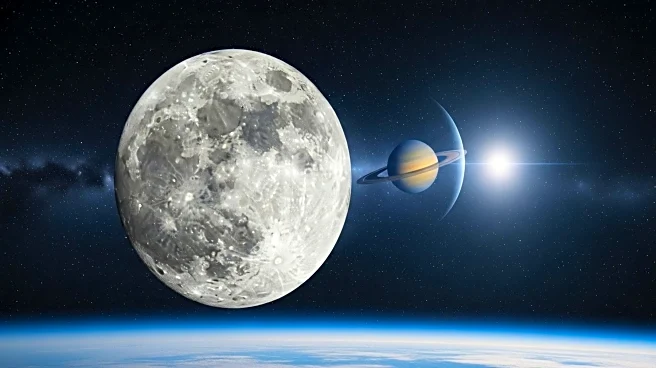What's Happening?
The National Oceanic and Atmospheric Administration (NOAA) has issued a G1 (minor) geomagnetic storm watch for October 7-8, 2025, due to several coronal mass ejections (CMEs) directed towards Earth. This alert coincides with the peak of the Draconid meteor shower, which is expected to produce up to 10 meteors per hour. However, a near-full supermoon is likely to obscure many of the fainter meteors. The Draconids, known for their unpredictability, could still surprise skywatchers with bright fireballs. Additionally, the geomagnetic storm could extend auroras further south than usual, potentially visible in parts of the northern United States and northern Europe.
Why It's Important?
The geomagnetic storm watch and meteor shower present a unique opportunity for skywatchers to observe both auroras and meteors. The potential visibility of auroras in lower latitudes could attract interest from amateur astronomers and the general public, enhancing awareness and appreciation of space weather phenomena. The Draconid meteor shower, despite the bright moonlight, remains a point of interest due to its historical unpredictability and potential for dramatic outbursts. These events highlight the dynamic nature of space weather and its impact on Earth, emphasizing the importance of monitoring solar activity.
What's Next?
Skywatchers are advised to monitor local aurora forecasts and find dark locations away from city lights to maximize their chances of observing the auroras and meteors. The NOAA's Space Weather Prediction Center will continue to provide updates on the geomagnetic storm's progress. As the Draconid meteor shower peaks, observers are encouraged to look towards the northwestern sky after nightfall. The next significant meteor event, the Orionid meteor shower, is expected to peak on October 21, offering another opportunity for meteor observation under darker skies.
Beyond the Headlines
The geomagnetic storm watch underscores the importance of understanding and preparing for space weather events, which can have implications for satellite operations, power grids, and communication systems. The potential for auroras to be visible at lower latitudes also serves as a reminder of the interconnectedness of Earth's magnetic field and solar activity. These celestial events provide educational opportunities for the public and can inspire interest in astronomy and space science.

